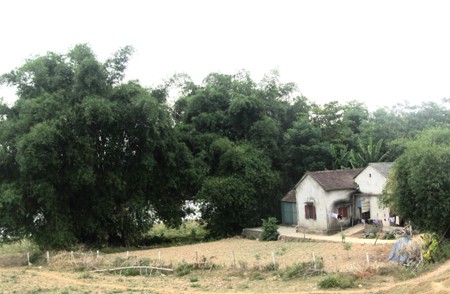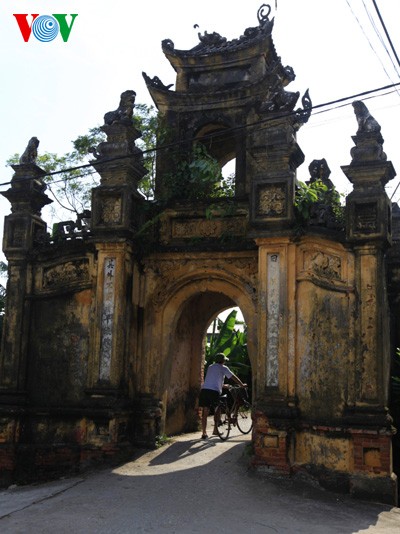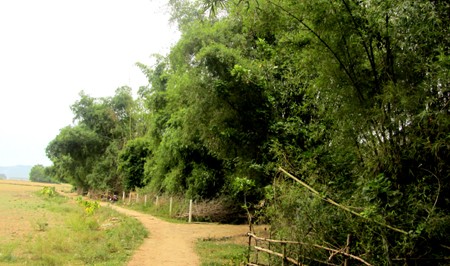(VOVworld)-An outgrowth of wet rice civilization, Viet villages are characteristically agricultural villages. The structure of a Viet village is adapted to rice farming and constitutes Vietnam’s typical rural space.
 |
The bamboo hedge surrounds a small hamlet in Yen Thanh district, Nghe An province.
(Photo: Tam Nhi/dantri.com.vn) |
A traditional Viet village is not large. It’s usually located beside a river or near another source of water and is surrounded by paddy fields where the villages earn their living.
In the past, almost every village in the Northern Delta, whether situated inside or outside the village dyke, was surrounded by a bamboo hedge, which protected the villagers against invaders and provided them with building materials.

The gate of Cuu village in Van Tu commune, Phu Xuyen district, Hanoi looks like a giant book. This gate is at the back of the village. The front gate was destroyed because it was too small. (Photo: vov.vn)
|
The village gate used to be built of bricks and had a stout ironwood door. A village gate demarcates the territory it claims from the outside world and is a typical architectural work that reflects the artistry, status, and virtues of the villagers. Doctor Dinh Hong Hai of National University Hanoi says: “A village usually had two gates. The main gate often displayed sophisticated architecture and was frequently decorated with parallel sentences. The rear entrance at the back of the village was for funeral processions. A village gate embodies intangible cultural values.”
 |
| Village road (Photo: Tam Nhi/dantri.com.vn) |
From the village gate, alleys paved with bricks leads to the houses. There are many small inter-connected alleys. The village’s main road leads to the communal house, a sacred place, which is built on a propitious site determined by geomancy. The communal house honors the village’s Tutelary God, the village’s founders, or heroes who sacrificed their lives for the locals or the nation. The communal house is where important village events take place.
Architect Le Quang Ngoc says: “The communal house is large and its surroundings are dignified. Thriving villages have larger communal houses".
Other architectural works harmonize with Vietnam’s natural beauty. Next to the village gate is a century-old banyan tree where local farmers relax after a day working in the fields. The village well provides water for the whole village and is considered the witness of the village’s ups and downs through many generations. The religious structures in a village include a temple, a pagoda, or clan worshipping houses roofed with yin-yang tiles and curved spear heads rising into the sky, symbolizing the villagers’ aspirations.
Houses are built close to each other along the village alleys. Each has a front yard and a garden. Rich villagers build houses with 5 or 7 rooms. Poorer houses have 3 rooms and 2 lean-tos. An ancestor worshipping altar in the main room is indispensable for a rural Vietnamese family. There is also a low wooden platform where family and guests can sit and chat.
The structure of a traditional Viet village creates a peaceful ambience which is remembered fondly by those who are far from their village of origin.